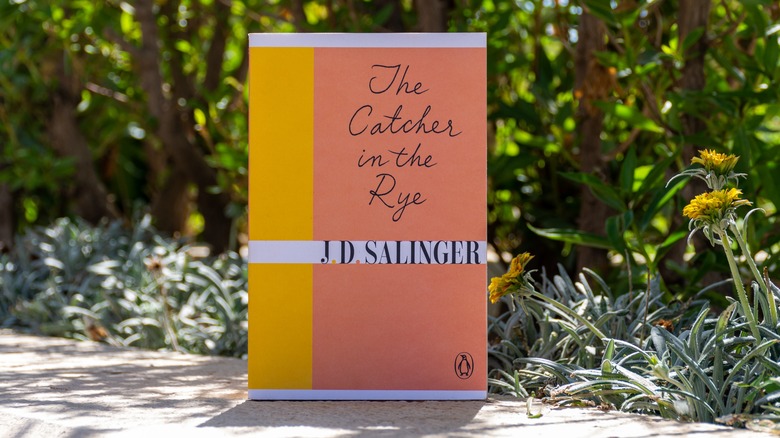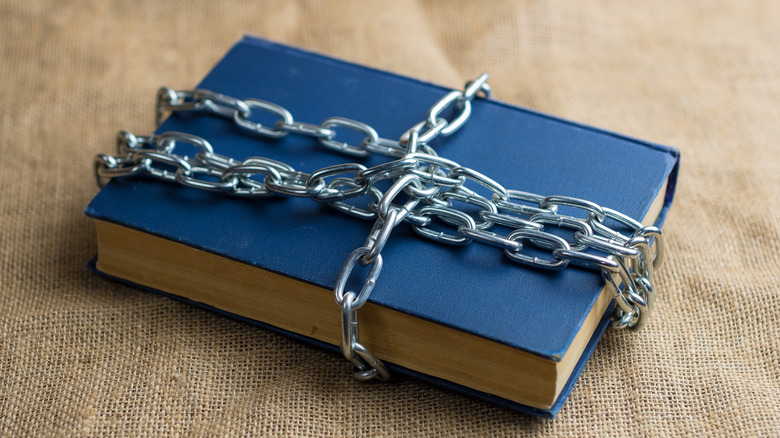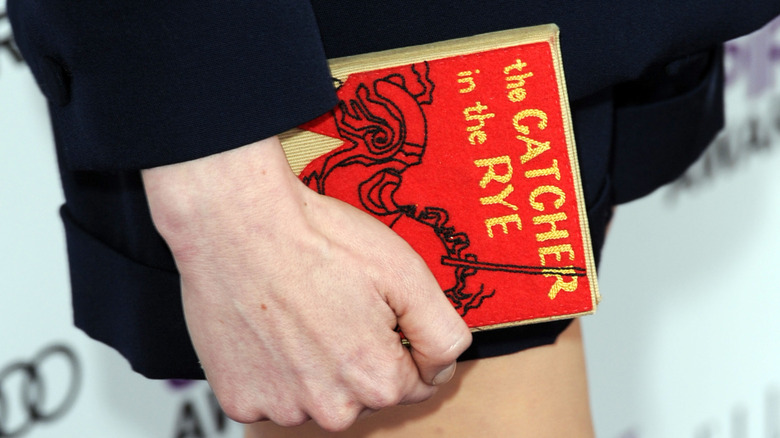The Real Reason The Catcher In The Rye Became A Banned Book
A pillar of many American high school English class syllabuses, J.D. Salinger's "The Catcher in the Rye" follows the wanderings of 16-year-old Holden Caulfield, whose rebellious and dark teenage persona masks a deeper loneliness and sensitivity (via Gilder Lehrman). Through his astute observations of the toxic societal conformity of the 1950s and his repulsion of the "phonies" most adults turn into (via Britannica), readers see Holden grapple with what is arguably an emotionally intelligent response to a sick culture.
But the profanity, alcohol use, sexual references, and mental health issues laden throughout the pages of "The Catcher in the Rye" have put the novel on the banned book list over and over (via Bookstr). Yet, remarkably, this story of teenage alienation also seems to find its way back into classrooms, despite the shadow of criticism it casts on the American school system. It seems the literary merit of this controversial antihero's journey can't long be denied.
This is who banned The Catcher in the Rye and why
While many parents and school board members saw the foul language, suicidal thinking, drinking, and Holden's flunking out of school as reason enough to take this book off the required reading list for fear impressionable high schoolers would mimic Holden Caulfield's ways, some say it's the book's blasphemous, anti-family content that's the true worrisome culprit.
"It uses the Lord's name in vain 200 times," said religious activist Patty Salazar in an interview with the Los Angeles Times, regarding a ban of the book in a local high school English class. "That's enough reason to ban it right there. They say it describes reality. I say let's back up from reality. Let's go backwards. Let's go back to when we didn't have an immoral society."
Moral ineptitude, swearing, smoking — whichever excuse communities choose to push for the book's elimination — the reason "The Catcher in the Rye" became a banned book varies and it certainly has been widespread since its publication in 1951. According to Banned & Challenged Books, "The Catcher in the Rye" has been challenged, removed, or banned over 25 times in schools all across the country, with the most recent reported case being in 2009 at Big Sky High School in Missoula, Montana. And yet, the book continues to land in the hands of students and this could be why.
The beauty of the book's title and why it returns to classrooms
Anyone who has read "The Catcher in the Rye" will recall the famous dialogue between Holden and his younger sister, Phoebe, where he describes the only job he deems worthwhile:
"Anyway, I keep picturing all these little kids playing some game in this big field of rye and all. Thousands of little kids, and nobody's around — nobody big, I mean — except me. And I'm standing on the edge of some crazy cliff. What I have to do, I have to catch everybody if they start to go over the cliff — I mean if they're running, and they don't look where they're going I have to come out from somewhere and catch them. That's all I'd do all day. I'd just be the catcher in the rye and all. I know it's crazy, but that's the only thing I'd really like to be. I know it's crazy" (via Thought Co).
Holden's desire to be a protector of childhood innocence and prevent the inevitable aging into "phony" adulthood is an idealistic theme that speaks of the underlying heart and wisdom hidden in angsty, hurting youths (via Gilder Lehrman). The life of a teenager can be isolating, confusing, and painful, but "The Catcher in the Rye" has been a friend to many in those rocky years. And it seems English teachers, long advocating for the book's merit, have been instinctively aware of this.


